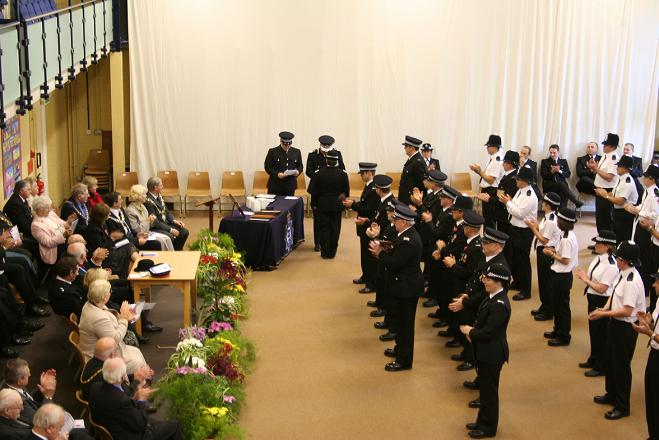- Reaction score
- 9,172
- Points
- 1,160
The temptation to offload responsibilities onto civilian agencies is highly tempting in this scenario. Some of those make sense, such as search and rescue and patrolling going to the coast guard.
Even use of force legal scenarios are not problematic in that the appropriate legislation can always be made to cater to that. More problematic is that the use of military force isn't a simple matter of allocating the responsibility to another agency. It takes equipment, a doctrine and constant training. The idea of having a basically civilian organization which on a day to day basis does non-lethal work suddenly, in an emergency, switch over to conduct lethal operations - regardless whether against manned or unmanned system - is asking quite a lot. Let me put it this way, the Reg F does not trust reservists who already get military training on both courses and on an ongoing basis to deploy for combat using relatively minor weapons without significant predeployment training. What is the likelihood of a government having the confidence to release lethal force authority for major weapon systems to people who are in all respects civilians and who have limited training and a part time command and control structure?
Do not underestimate the complexity of these weapon systems and the rigid command and control structure that needs to be in place and rigorously tested and practiced on a regular basis.
Just a point on Op Palaci. I did two tours as the Oi/c of AvConDet and understand the system quite well. In short, there is never a transfer of control to the military. Parks Canada employs several civilian experts in what is now called the Avalanche Control Section who are on duty in round the clock shifts and who are responsible for researching weather and snow conditions throughout Rogers Pass and who determine when a shoot is required to release dangerous slides. While the Army mans the guns, its the ACS supervisor who accompanies each shoot who determines what target is to be fired and when. There isn't a single round that leaves a gun unless expressly ordered by the civilian ACS supervisor.
I look forward to your next few posts.

The Civil-Military interface alluded to by both you and Lenaitch is indeed a significant problem. And Op Palaci may not be the appropriate example but it is one of the few examples I can think of where "The Ordnance" has been, and is currently, used domestically.
The problem is exacerbated by the fact that "The Ordnance" (continuing from the Canadian Armed Forces) will be operating solely on home-turf and thus always subject to Canadian civil authorities. Effectively every action will be an Aid to the Civil Power action. Rules of Engagement will have to be sorted out on a government-wide basis.
One model I can think of, particularly appropriate, is the role of 22 Wing, and particularly 21 Squadron, at North Bay. It is responsible for the Canadian Air Defence Sector, I believe, and works in a civilian controlled NAVCAN environment. NORAD and NAVCAN seem to have come to an amicable understanding. I see no reason, even under the new government, to disrupt that arrangement.
Given that, and given that North Bay monitors the North Warning Systems 47 (IIRC) radars remotely while launching fighters from Cold Lake and Bagotville, and Leitrim monitors Masset and Gander remotely, it would seem not impossible that 22 Wing continue as the military's National Airspace Coordination Centre. It would then continue working in conjunction with NAVCAN and its Air Traffic Controllers. The Airspace would still be owned by the civilian controller. They would have the military advice and assistance of the RCA GBAD det on site operating in conjunction with 22 Wing in North Bay.
Perhaps something along those lines?
As to the question of manpower and shifting responsiblities - absolutely I would anticipate that in downsizing the CAF from 68,000 to 15,000 that the remaining 53,000 PYs would be transferred along with the responsibilities, thickening up the civil agencies. And off course the personnel budget would go with them.






